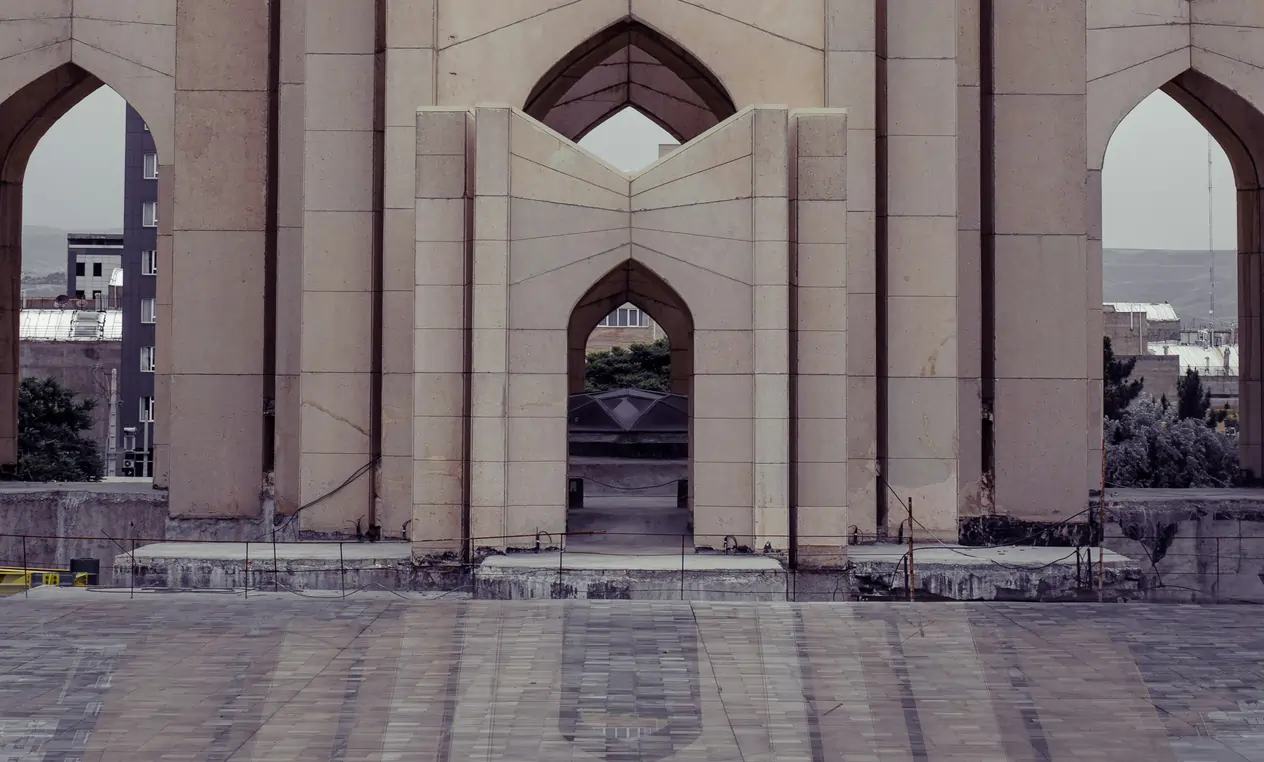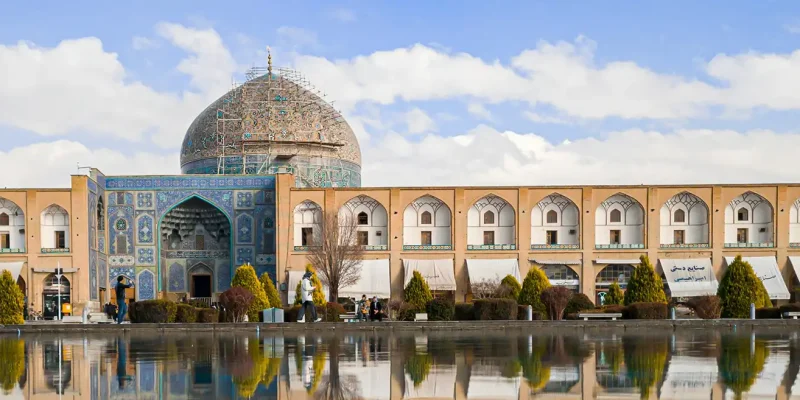
Tabriz, a fascinating city in northwestern Iran, has a history and culture that goes back thousands of years. This old city, which used to be an important stop on the Silk Road, shows off its long past in many ways. From busy markets to breathtaking buildings, Tabriz mixes old and new in a special way. This makes it a place you shouldn’t miss if you want to see the core of Persian civilization up close. Visitors can explore the city’s lively bazaars and marvel at its impressive architecture getting a real feel for both its traditional roots and its modern face.
Tabriz has an influence on many parts of Iranian life, from art and learning to trade and food. People who visit can soak up the city’s amazing buildings, find hidden spots in narrow streets, and feel how friendly Tabriz folks are.
This piece looks at why the city matters in history, shows off its beautiful landmarks, and reveals less-known treasures. It also talks about how Tabriz links to natural wonders like Lake Urmia and points out how Tabriz University shapes the area’s world of ideas.
Tabriz Through the Ages
Ancient Origins of Tabriz
Tabriz, a city with deep historical roots, traces its origins to ancient times. People think the oldest parts of today’s Tabriz came to be in the early Sassanid era, around the 3rd or 4th century AD. Yet, some experts claim the city might have started in the 7th century. Tabriz played a key role as a center for trade and cultural mixing due to its prime spot on the Silk Road.
Mongol and Timurid Era
The Mongols invaded in the 13th century changing Tabriz forever. The city thrived as the imperial capital under Ilkhanid leadership. During this time, people built impressive structures like the Rab’-e Rashidi, a learning center completed in 1300. Tabriz stayed important in the Timurid period developing a unique architectural look. This style featured big buildings and fancy tile decorations.

Safavid Dynasty
The Safavid era ushered in a golden age for Tabriz. In 1501, Shah Ismail I took control of the city and declared it the capital of his established empire. Tabriz grew into a hub of Shi’a Islam and saw remarkable cultural and artistic development. The city’s population boomed, hitting about 300,000 by 1500, which made it the world’s fifth most populous city at that time.
Modern Tabriz
In the 18th and 19th centuries, Tabriz faced many problems, like big earthquakes and political troubles. Even with these problems, the city stayed strong. The Constitutional Revolution in the early 1900s got a lot of support in Tabriz. The city played a key part in making Iran more modern. Now, Tabriz is still a big cultural and economic hub in Iran. It has important places like Tabriz University and is close to the beautiful Lake Urmia.
Architectural Marvels of Tabriz
The Grand Bazaar
Tabriz’s Grand Bazaar showcases the city’s deep roots and architectural skill. This huge complex, which UNESCO lists as a World Heritage Site, has an influence on many parts of Iranian life. It features a network of linked roofed brick buildings that make up a complete urban system. The bazaar’s design shows how trade and culture have grown over hundreds of years, with 27 smaller markets each focusing on different products and services.
The Grand Bazaar’s architecture boasts tall domes, arches, and a maze of walkways that make you feel like you’re in a tiny town. It stays true to how it looked in the 1700s keeping both its buildings and the vibe of an old Iranian market alive. As the biggest indoor bazaar in the Middle East, it still plays a key part in Tabriz’s economy and community life.

Kabud Mosque (Blue Mosque)
The Blue Mosque also called Kabud Mosque or Jahanshah Mosque, stands out as a beautiful example of Turkmen architecture. The Qarā Qoyunlu dynasty started to build this impressive structure, which reached completion in 1465. The mosque’s eye-catching feature is its beautiful tilework, which shows off the skill of Tabriz’s ceramic artisans.
The inside of the dome room has dark-blue six-sided tiles and gold stenciling making it more ornate than anything seen before later times. Even though a big earthquake in 1780 badly hurt the mosque, people have been working to fix it up since 1973. Now, the Blue Mosque shows how Tabriz can bounce back and how good its art is.
Constitutional House of Tabriz
The Constitutional House of Tabriz also called Khaneh Mashrouteh, has a big impact on history. Haj Vali Me’mar-e Tabrizi built this two-floor building in 1868, and it played a key part in Iran’s Constitutional Revolution. The house shows off a one-of-a-kind design, with a skylight that has colored glass and mirrors. Four columns with plaster decorations hold up this skylight.
Hidden Gems of Tabriz
Saat Tower
The Saat Tower in Tabriz also called the Tabriz Municipality Palace, shows off the city’s impressive building history. This famous structure built from 1935 to 1939, blends Iranian and German design styles matching the look of German buildings before World War II. The tower’s standout feature is its clock with four faces, which rings every hour to tell time to Tabriz’s people.
You can find the palace right in the middle of the city at Saat Square, and it’s easy to get there by public transport, including the Tabriz metro and fast bus system. Its spot near several well-known markets, like the big covered bazaar, makes it a hit with tourists and people who love taking photos.

Shahryar Park and Poets’ Mausoleum
The Mausoleum of Poets called Maqbaratoshoara, shapes Tabriz’s cultural scene. This special tribute to Iran’s writing legends holds the remains of more than 400 poets, mystics, and important people from the last 800 years. The eye-catching design of the mausoleum created by Ghulamreza Farzan in 1971, stands as a symbol of the area’s deep cultural roots.
A beautiful park with a calm pool encircles the mausoleum giving visitors a peaceful place to think about how these poets and thinkers shaped Iranian culture. The area also boasts lovely stone carvings and contains the burial site of Mohammad Hossein Shahriyar one of Iran’s most admired modern poets.
Iron Age Museum

The Iron Age Museum sits close to the Blue Mosque of Tabriz offering a special archeological spot for people to see into the area’s old history. This below-ground museum, which opened to the public in 2007, displays a set of 38 old graves that go back about 3,500 years.
The museum’s layout lets people see the remains from below giving them a close-up view of Iron Age burial traditions. The displays show pottery, decorations, and tools discovered near the bodies shedding light on the beliefs and practices of that time. The museum’s damp atmosphere, kept in check by AC units, helps keep these old artifacts in good shape for researchers and visitors in the years to come.
Conclusion
Tabriz, a city with deep roots in history and culture, gives visitors a mix of old-world charm and modern energy. Its busy Grand Bazaar and stunning Blue Mosque show off buildings that have lasted for ages. The city’s lesser-known spots such as the Iron Age Museum and the Mausoleum of Poets, offer more details about its long history and love of literature. These sights have a big impact on the city’s cultural scene bringing in tourists and history lovers from all over.
Besides its historical importance, Tabriz still has a crucial part in Iran’s economy and thinking. The city’s toughness through hundreds of years of shifts shows in its busy markets schools, and ongoing fix-up work. When you walk through the tight paths of the bazaar or look at the clock tower in Saat Square, Tabriz will grab your attention with its special feel. This old city mixing old ways with new ideas, shows how strong Iranian culture has been over time.
FAQs
Tabriz is known for its rich history, vibrant culture, and architectural wonders. It is home to the UNESCO-listed Tabriz Historic Bazaar Complex, stunning mosques like the Blue Mosque, and a strong tradition of carpet weaving. Tabriz is also recognized as a hub of literature, art, and modern development in northwest Iran.
Tabriz is located in northwest Iran, serving as the capital of East Azerbaijan Province. It is situated near the borders of Turkey, Armenia, and Azerbaijan, making it an important cultural and economic gateway for the region.
The best time to visit Tabriz is during spring (April to June) and early autumn (September to October). During these months, the weather is pleasant, making it ideal for exploring the city’s historical landmarks, parks, and surrounding natural beauty.
Tabriz offers many attractions, including the Tabriz Historic Bazaar, the Blue Mosque, El Goli Park, and the Constitution House of Tabriz. The nearby Kandovan village, known for its rock-carved homes, is also a popular day trip destination.
Tabriz is a cultural and historical hub of Iran, celebrated for its role in Persian and Azerbaijani literature, art, and politics. The city has been a center of trade and learning for centuries, playing a key role in the constitutional movement and modern intellectual history of Iran. It is also famous for its delicious local cuisine, traditional music, and vibrant festivals.



